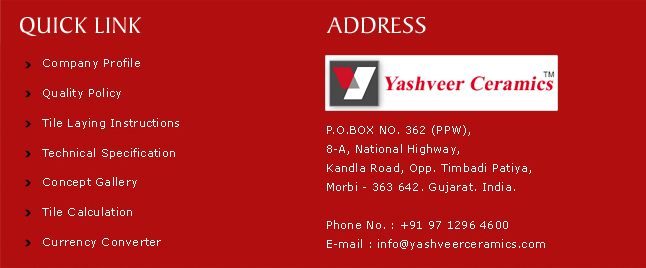Tiles & Art
A tile is not just a stone, it is piece of work. Ceramic tile paintings are few of the most sought after art specimens. Art has been portrayed over the decades through ceramic tiles.
During the 1920s and 30s , Spanish colonial revival was one of the most popular architectural styles in the southwest. Colourful ceramic tile as well as clay tile roofs, roughly plastered walls, arched doorways, and wrought iron window grilles create some of the key elements of this style. in turkey, tiles and ceramics occupies a place of prominence in the history of Islamic art. Its roots can be traced at least as far back as the uighurs of the 8th and 9th centuries. Its subsequent development was influenced by karakhanid,ghaznavid, and (especially) Iranian Seljuk art. Even today tile paintings are a work of art that many are crazy about.
Plain Glazes
white lead, flint, china stone and china clay were ground to form a glaze. A clear glaze brought out the natural body colour and might be applied over any colored decoration. Glazed tiles are decorated with natural and artificially colors. Palette of colors consists of glaze and under glaze colors. The first glazes were blue in color and were made from copper. Also turquoise and light green glaze were popular colors. Ground metal oxides could be added to give different colours.
Encaustic or Inland
This method was to fill the matrix of a stamped tile with white pipe clay before it was glazed and fired. the two sections fusing during firing.
Mosaic
Tiles in such colors as yellow, blue, brown, black, turquoise, green and white were cut and carved into small pieces according to a previously prepared pattern. These pieces were placed close together and liquid plaster pored over to fill in all the opening and gaps. After the plaster dried and hardened, a large single piece tile panel had been created, which was then plastered onto the required wall of the building.
Handpainting
The artist painted freely onto a plain surface tile. The glaze was one centimeter thick, with hand-painted decorations of flowers, plants, geometric designs, birds and human beings. a design could also be copied from an original sketch by 'pouncing'. Alternatively a tile could be transfer printed and coloured by hand.
Carved & Modelled Tiles
Each piece is individually carved in relief or modelled in clay, the pattern could be engraved in outline on the surface of the tile or the design carved in relief or counter-relief on a wood-block which was then pressed into the tile. Sometimes painted to emphasize the three-dimensional appearance of the work.
Sgraffito
An early form of decoration, the tile body is covered with coats of slip that is scratched off to produce the design.
Lustre Painting
The metallic luster of glazed ceramics is a very special type of decoration. it can be red, brown, ochre yellow or green in scattered light and shows, in specular reflection, colored metallic reflections (blue, yellow, orange, rose…). Metallic copper and silver colloids suspensed in glazes compose luster decoration.
Tube Lining
Slip is trailed onto the surface of the tile to make raised lines separating the areas where different colour is wanted. coloured glazes were then applied. this technique was used for art nouveau tiles.
Transfer Printing
A copper plate was engraved with a design, this would be covered in colour, the excess removed leaving the colour only in the engraved parts. a tissue paper was pressed onto the plate, and placed colour side down onto the tile. then removed, and the colour transferred to the tile. this method was quicker, and therefore cheaper than hand painting.
Scheme of Decoration
Tile Pictures
Square tiles were placed together and necessary design was painted in glazed colors on them. each tile was fired. then all were placed again next to each other to create the main large illustration.
Patterns
Mathematically-minded people elaborated geometric designs, providing a continuous decoration. Most designs required four tiles to complete a pattern, some required as many as sixteen. a ‘wallpaper’ pattern is one that has translation symmetry in two directions (such as left/right and up/down). A frieze pattern is one that has translation symmetry in one direction. A rosette pattern is one that has no translation symmetry, just reflection and/or rotation symmetry.


